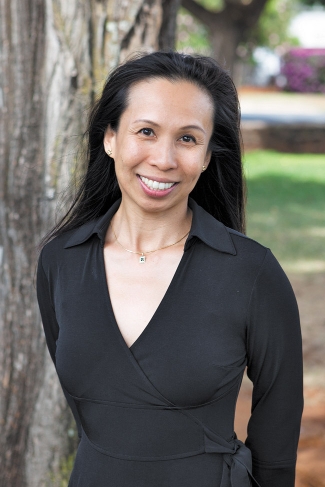Girls, Trauma And Mental Health
Ruth LaMer
Practice development specialist with Project Kealahou
Where did you receive your schooling/training?
I was born and raised on Oahu. I received my bachelor’s degree in family resources from the University of Hawaii at Manoa, and my master’s degree in social work with a focus in mental health from the University of Southern California. I am a licensed clinical social worker.
How long have you been practicing?
I have been a practicing social worker for more than 10 years. I am currently a clinical supervisor with Project Kealahou, funded by a federal grant within the state Department of Health’s Child and Adolescent Mental Health Division.
What is Project Kealahou?
Project Kealahou serves girls, or boys who identify as girls, ages 11 to 18, who have experienced difficult times and want extra support to get through life’s difficulties. Project Kealahou offers one-on-one mentoring where the girl meets with an adult female staff. The program is gender-specific and girl-focused. We also offer youth activities where the youths meet with other girls participating in the program around the island.
In addition to providing one-on-one mentoring, we have youth activities and provide trauma-focused, cognitive behavioral therapy in partnership with Hawaii Families as Allies (HFAA). We also link parents to HFAA to participate in family activities to reemphasize and reinforce family structure. One of the important steps in working with traumatized youths is creating a safe environment and normalcy, allowing youths to feel safe to express difficult and strong emotions they may normally keep inside.
How do girls end up in your program?
Referrals come from the major child-serving state agencies, such as the Department of Education and Child Welfare Services. We also have church groups and the detention home, probation officers, social workers, parents and other family members who are concerned about the girl they’re caring for. Usually they refer a girl to our program because of things the girl may have experienced, such as physical or sexual abuse, or bullying in school. They may have witnessed domestic violence within their family, or with a boyfriend or girlfriend.
How challenging is it to help children who have been exposed to intense trauma?
Working with trauma survivors is challenging. However, once you get into trauma work, you find out how resilient and strong children and young people are. We teach the children adaptive coping skills to deal with the difficult experiences in a healthy manner. For the adolescent girls we work with, some of the common things we see are that they’re acting out in school – we see a lot of anxiety, social withdrawal and school performance issues. Those are identifying triggers that teachers or parents may see, but once they come to us, we create a safe environment. No matter how distressing or tragic their experience was, the strength that comes from within them is eye-opening. At such a young age, it’s like, “Wow, look at what they’ve had to deal with and look how far they’ve come!” We use Native Hawaiian culture in our program a lot, and one of the metaphors we use with our girls is the ‘a’ali’i shrub – they are most commonly on dry, windswept ridges in Hawaii, and are very resilient, life-loving plants.
Is there a similar program for boys?
I believe there are programs for boys, but I believe this is the first gender-specific, for-girls mental health program here in Hawaii. Girls have unique needs that differ from boys, and girls react to trauma differently than boys. Girls are more relationship-focused, while boys tend to act out physically. Girls may internalize the trauma more.
Do children of different ages respond to trauma differently?
Children respond to trauma based on their age and developmental level. Younger children tend to regress to a previous behavior that they’ve overcome, like bed-wetting or thumb-sucking. For children ages 5 to 11, you may see signs of trauma in how they act at play or at school. They may no longer be interested in their playgroups. They may tend to be clingy with their parents or caregivers. They may be unable to concentrate. The adolescent population we work with is able to verbalize more compared to the younger kids. Some of the common signs we see with adolescents are running away and a decline in school performance, where they’re no longer motivated or they stop going overall. They may exhibit resistance to authority and withdrawal from things they used to love, such as sports or a hobby. They may internalize the trauma or become more on edge and nervous.
How quickly do children respond to counseling?
It depends on the intensity of the trauma. You have to go at their pace. It goes back to providing a safe environment and creating a space where the kids can talk when they want to, or not talk – it needs to be their choice. When they don’t feel like talking, we let them know, “Hey, when you’re ready, we’re still here. We’re not going to go anywhere.”
What makes you passionate about this?
I love helping people. It’s about enjoying that moment when you see a youth say, “My gosh, I’ve got it,” and they grow. I’ve seen them come from a dark place to feeling empowered and being able to recognize that they are not defined by that traumatic experience. They can grow from it and become better than it. That’s what keeps me going. It is difficult, heart-wrenching work when you hear their stories. At the same time, it’s worth it to help them find hope and heal.






